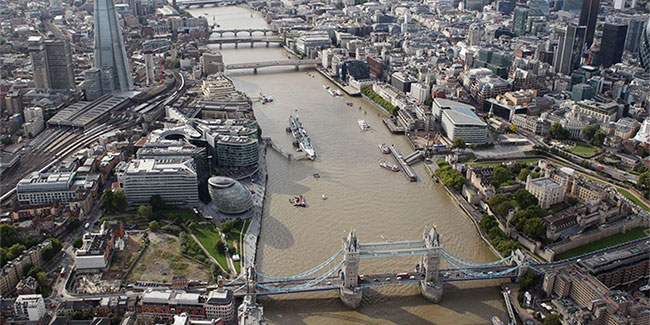Rivers are infected with antibiotics
Global-level research finds antibiotic residues in two-thirds of water samples in 72 countries. This means that hundreds of rivers around the world have very high levels of antibiotics.
Many large and famous rivers of the world, such as the British River Thames , are now "infected" with antibiotics with high concentrations exceeding the prescribed level, becoming the perfect environment for many types of bacteria to adapt to the environment. being born and becoming resistant.
More worryingly, the antibiotics found in these rivers are all commonly used in the region and play an important role in the treatment of diseases.
Specifically, samples from the Danube in Austria - the second largest river in Europe, contain up to 7 antibiotics, including clarithromycin - often used to treat pneumonia and pneumococcal disease. The concentration of antibiotics in this river is 4 times higher than the safe level.

The British River Thames is also polluted when the antibiotic concentration is higher than the safe level - (Photo: AFP).
The Thames - considered one of the cleanest rivers in Europe, is also infected with five antibiotics. A test sample on the Thames and 3 samples on the branches of this river has pollution levels exceeding the safety threshold.
Thus, when these types of bacteria change to antibiotic resistance, the treatment of the coming disease will be challenging and extremely difficult.
" This is quite intimidating and stressful. We have many environmental areas that have such high levels of antibiotics that can affect drug resistance," said Alistar Boxall, an environmental research scientist. York University (UK) and co-author of research - affirmed.
Last month, the United Nations (UN) also warned of an increase in the types of bacteria that are resistant to antibiotics, claiming that this is an emergency medical situation that could strip life. of up to 10 million people worldwide by 2050.
The main cause of this is improper discharge of human activities. Accordingly, in addition to improper treatment of domestic waste, drug factories have not yet applied a thorough waste treatment.
The researchers took samples of 711 rivers in 72 different countries and found antibiotics in 65% of the samples. Of which 111 samples contain higher concentrations than are considered safe. There is even a test sample that shows a concentration 300 times higher than the safe level.
Countries with low living standards such as some countries in Africa and Asia have high levels of drug in the river compared to other countries. Bangladesh has the highest concentration, 300 times the safe level. The reason is that due to lack of proper waste treatment technology, people have poured waste directly into rivers and streams.
"Improving the safety management of health and hygiene services in low-income countries is crucial in combating antibiotic resistance," said Helen Hamilton, health analyst and Hygiene at British charity Water Aid, affirmed.
The research team plans to learn about the impact on the environment, wildlife and marine life of drug pollution in rivers. Specifically, in Kenya, the problem of water pollution becomes so serious that there is no longer any river fish in this area.
The study was published on May 27 at a conference in Helsinki, Finland.
- What are antibiotics and classify antibiotics
- 'Heavenly' facts about antibiotics
- Find new antibiotics under the ocean
- How antibiotics are the best?
- Why do you know that antibiotics do not treat flu, many people continue to abuse?
- Antibiotics from dirt
- Bad habits of parents hurt the liver and kidneys, endanger children
- 7 mistakes we often make when talking about antibiotics
- Understand disease to use antibiotics correctly
- Find a new drug that can replace antibiotics
- When do you need to say 'no' to antibiotics?
- Children under 2 years of age use many antibiotics prone to obesity
 Is the magnetic North Pole shift dangerous to humanity?
Is the magnetic North Pole shift dangerous to humanity? Washington legalizes the recycling of human bodies into fertilizer
Washington legalizes the recycling of human bodies into fertilizer Lightning stone - the mysterious guest
Lightning stone - the mysterious guest Stunned by the mysterious sunset, strange appearance
Stunned by the mysterious sunset, strange appearance